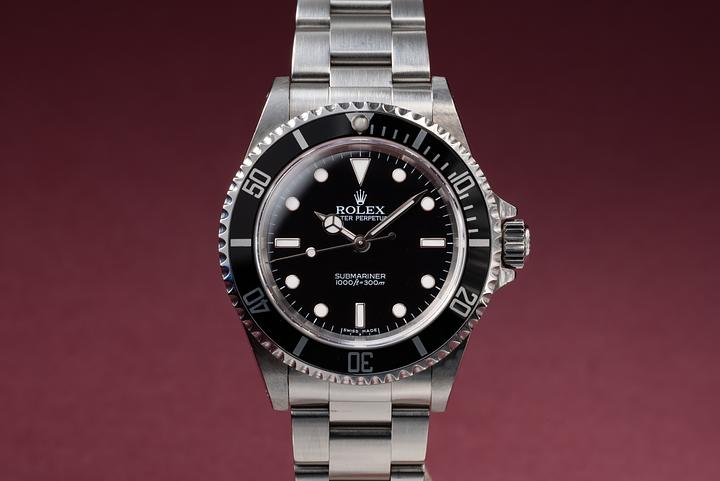Rolex Daytona and Le Mans: A Legacy of Speed and Precision

The Legacy of the Rolex Daytona and Its Enduring Connection to Le Mans
Some watches tell time. Other watches tell stories. And then, there’s the Rolex Daytona—a timepiece that's transcended its own mechanics to become a symbol of speed, endurance, and motor sport legacy. For decades, the Rolex Cosmograph Daytona has been one of the most sought-after mechanical chronographs in the world, and its deep connection to the 24 Hours of Le Mans only strengthens its legendary status. Built on precision, Swiss excellence, and motorsport adrenaline, this watch isn’t just an accessory—it’s a mark of performance. Okay, deep breath. Let’s unwrap how this chronograph grew from a practical tool for racers to an iconic artifact of luxury and achievement, closely tied to Le Mans and the Swiss watchmaking excellence.
Origins of the Rolex Daytona: Answering a Need for Speed
Let’s rewind for a moment. The Rolex Cosmograph Daytona was first introduced in 1963, a direct response to the surging popularity of professional motorsports. Rolex recognized a niche that needed filling—a precise, reliable chronograph that could handle the intensity of automobile racing. The Daytona name, of course, came from the famous Daytona International Speedway in Florida, where Rolex had already started building its motorsport legacy. But the Daytona wasn’t born in a vacuum. The early models, particularly reference 6239, featured an engraved tachymetric scale on the bezel and a high-contrast dial for maximum legibility. Practicality was the baseline, aesthetic came next. Still, those original models didn’t explode in popularity right away. Patience. Like most legends, it aged well.
Swiss Craftsmanship Meets Motor Sport—A Perfect Match
Behind all the engine roars and checkered flags is the heartbeat of the Swiss watch industry—the same precision and discipline that gave rise to Rolex in the first place. Headquartered in Geneva, Rolex is not only a byproduct of Swiss horology, but arguably its crown jewel. The Daytona represents everything Swiss watchmaking aspires to: durability, elegance, detail, and absolute accuracy under pressure. Manufactured using 904L Oystersteel, known for its strength and anti-corrosion properties, combined with in-house calibers like the perpetual movement 4130, the Daytona has the mechanical muscle to back up its style. I mean—it’s basically the race car of wristwatches. And when you fuse that high-performance DNA with the demands of endurance races like the 24 Hours of Le Mans, things start getting beautifully aligned.
Rolex and Le Mans: Partnership Forged by Time and Triumph
Now here’s where things get really interesting. Rolex’s relationship with Le Mans—the oldest and most prestigious endurance race in the world—adds another layer to the Daytona’s mythology. Although the Daytona was originally inspired by American motorsports, the alignment with Le Mans feels natural. The 24-hour challenge in France's Sarthe region demands resilience, precision, and performance—words Rolex lives by. Rolex became the Official Timekeeper of the 24 Hours of Le Mans in 2001. This move cemented the bond between motorsport’s ultimate endurance contest and Rolex’s embodiment of timekeeping excellence. And yes, winners of the race receive something arguably more meaningful than a trophy: a specially engraved Rolex Daytona, given at the podium. If you needed proof that time is the ultimate reward, there it is.
Celebrating 100 Years of Le Mans: The 2023 Limited Edition Daytona
In 2023, Le Mans celebrated its 100th anniversary. A century of endurance racing felt like the perfect moment for Rolex to unveil something special. Enter the Rolex Cosmograph Daytona Le Mans Edition—a refined iteration launched to commemorate this rare occasion. Based on the platinum Daytona with an ice-blue dial, this anniversary edition featured a white ceramic bezel with red "100" marking on the tachymetric scale at the 4 o'clock position. Subtle, elegant, but striking if you know what to look for. Then there’s the transparent case back—a rarity for Rolex—which lets wearers glimpse the caliber 4132 movement. It’s a soft nod to progress, honoring tradition without sacrificing innovation. And hey, blink and you missed it—availability was ultra-limited. As is often the case with Rolex, desire inevitably outpaces supply.
The Daytona Today—From the Track to the Collector’s Vault
Fast-forward to today, and the Daytona is not just a track tool; it's cultural currency. Yes, it's still used by serious racers (hello, endurance champions), but it’s also found on the wrists of collectors, Hollywood heavyweights, artists, entrepreneurs. Paul Newman’s Daytona—famously gifted by his wife Joanne Woodward—basically rewrote what a celebrity watch auction could achieve, fetching a staggering $17.8 million in 2017. That story pretty much jump-started modern Rolex collecting. And while various references—from the vintage 6263 to the modern ceramic-bezel models—continue to gain collector clout, it’s the link to motorsport, and specifically Le Mans, that keeps the heartbeat authentic. You can wear it to a gala, but it’ll still whisper stories of racetrack heroics.
Timelessness in Motion: Why the Rolex Daytona Continues to Matter
Look, there are few tools in life that are this handsomely engineered. Fewer still that hold century-spanning relevance. The Rolex Daytona is not just a watch; it’s a timeline running parallel to human performance, iconic races, and technological evolution. The tie to Le Mans isn’t just marketing—it's a shared ethos. Precision. Courage. Endurance. And while the Swiss watch industry continues to evolve with smartwatches and mechanical marvels alike, the timeless appeal of the Daytona remains unshaken. It’s not about chasing trends. It’s about anchoring yourself to something that will never go out of style—time, legacy, and excellence. Whether you're strapped into a race car or sitting in a coffee shop daydreaming about one, the Daytona is a reminder that great stories are measured in seconds. And Rolex? Well, they’ve always known how to make every one of them count.




